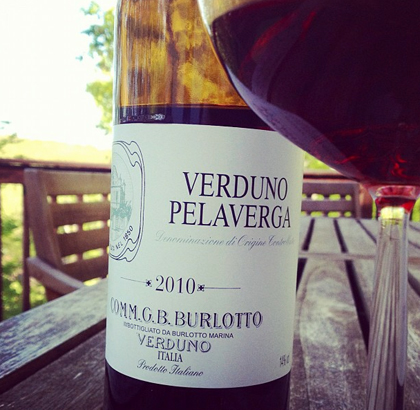Dr Vino's wine blog
wine talk that goes down easy
Sting: pay to pick my grapes
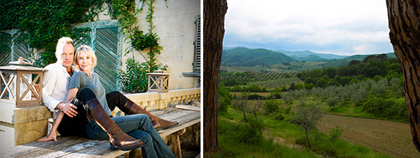
Finding labor to perform the annual harvest at a vineyard can be hard. Many wineries compete for migrant laborers at a time when there are lots of other fruit to bring in; we’ve even seen wineries recruit students to pick the grapes. But Sting doesn’t have such difficulties: the Englishman in Tuscany is charging people $350 a day to come and work in his vineyard.
The paying pickers would arrive at a leisurely 11:30 at Il Palagio, Sting and Trudie Styler’s 900-acre estate. After a picnic on a lawn, with possibly a game on the giant chess set, the paying help can then start laboring for up to four hours. Then, freshen up (no word if the pool is available), and, before heading out, try a sampling of the estates wines, including the rosso “Message in a Bottle,” which sells in the US for about $20. No word if the estate’s owners will be around but guest workers will get a talk from the estate manager about the vineyards and soil, as well as winemaking.
If you can’t get enough time under the Tuscan sun, you can go back in November and harvest Sting’s olives.
G.D. Vajra in Barolo – “clean traditionalist”
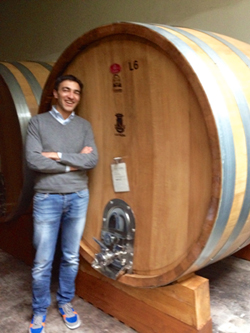 Giuseppe Vaira was caught in a fight when he was in elementary school. It wasn’t the sort of meet-you-at-the-bike-racks kind of thing. No, it encapsulated what might happen only to the son of a winemaker, or even the son of a Barolo winemaker. He was classmates with two other kids who were also from wine families. One said proudly that he was the son of a modernist winemaker while the other said proudly that she was the daughter of a traditionalist. No doubt, both the kids harrumphed, crossed their arms, and turned their backs to each other.
Giuseppe Vaira was caught in a fight when he was in elementary school. It wasn’t the sort of meet-you-at-the-bike-racks kind of thing. No, it encapsulated what might happen only to the son of a winemaker, or even the son of a Barolo winemaker. He was classmates with two other kids who were also from wine families. One said proudly that he was the son of a modernist winemaker while the other said proudly that she was the daughter of a traditionalist. No doubt, both the kids harrumphed, crossed their arms, and turned their backs to each other.
Giuseppe was flummoxed. Which camp did his family winery fall into? Read more…
Prosek/Prosecco: confusing? The EU says yes
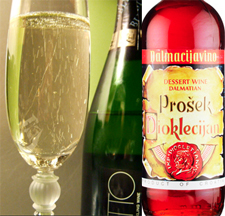 Croatia is set to become the 28th member state of the EU on July 1. Yet the membership has hit a vinous snag: the EU requires that winemakers drop the local wine name “Prosek” since it sounds too much like Prosecco from Italy. Yet the two wines are different since Prosek is sweet, still and centuries-old while Prosecco is (mostly) dry, fizzy and a more recent creation.
Croatia is set to become the 28th member state of the EU on July 1. Yet the membership has hit a vinous snag: the EU requires that winemakers drop the local wine name “Prosek” since it sounds too much like Prosecco from Italy. Yet the two wines are different since Prosek is sweet, still and centuries-old while Prosecco is (mostly) dry, fizzy and a more recent creation.
“I can’t even think what would happen if our Prosek disappears,” a leading maker of the wine told the AP. He continued, “Every house here has been making Prosek. Taking Prosek away from Dalmatia would be like taking away the sea.”
What do you think–a travesty or necessary? Either way, I’m sure the “Champay” producers of red sweet wine from Turkey are reconsidering their EU support.
Destroyed: six complete vintages of Soldera
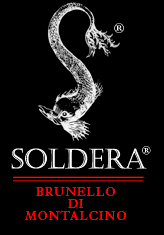 An appalling and heinous crime in Montalcino has resulted in the destruction of six complete vintages of Soldera, the acclaimed, expensive, and already hard-to-find wine. Unknown assailants broke into the winery and opened the taps of the large oak casks. The contents of all the unbottled vintages 2007 – 2012 spilled onto the floor, lost down the drain. Forever. Nothing else in the winery was stolen or destroyed according to winenews.it, which carried the brief account based on communication from Gianfranco Soldera.
An appalling and heinous crime in Montalcino has resulted in the destruction of six complete vintages of Soldera, the acclaimed, expensive, and already hard-to-find wine. Unknown assailants broke into the winery and opened the taps of the large oak casks. The contents of all the unbottled vintages 2007 – 2012 spilled onto the floor, lost down the drain. Forever. Nothing else in the winery was stolen or destroyed according to winenews.it, which carried the brief account based on communication from Gianfranco Soldera.
It’s a tragic crime against wine. This news rips at the heart of any wine enthusiast, indeed probably anyone who can imagine six years of their work destroyed especially since it never saw the light of day.
In all, the equivalent of 80,000 bottles of wine was lost. The last vintage of Soldera that is commercially available, the 2006, fetches about $250 a bottle. (find this wine)
On Twitter, reaction was swift. Alder Yarrow dropped the F bomb. Lyle Fass called it “Beyond heinous,” calling it the “worst news I could imagine out of Italy and the wine world.” Italian Wine Merchants tweeted “I can’t begin to wrap my mind around Soldera’s loss. Like having your children, your life’s work and your art killed at once.” Michael Madrigale tweeted: “horrible. wicked. I’ve heard of this happening in Southern Italy (mafia) but never in Tuscany.” John Gilman wondered, “Will good ever prevail over bad?”
Katherine Cole expressed a common sense of bafflement at the events in Brunello: “Why why why why why why whywhywhywhywhywhywhywhywhy would someone do that to Gianfranco Soldera?????????????????”
UPDATE 12/4: Gianfranco Soldera has put out a press release detailing that 62,600 liters were destroyed. He writes “Our thoughts and actions, at this time, are directed solely toward the future because no intimidation can stop our work and passion for this land and the products it yields.” Whole statement is here. Thanks to Robert Bohr of Grand Cru Selections, the US importer of Soldera, for passing it on.
Drink like a hipster: pelaverga edition
Pelaverga. Never heard of it? That’s understandable. This is almost an heirloom variety in Piedmont that used to be grown in greater quantity (and even blended into Barolo before it had to be 100% nebbiolo). Now the grape is experiencing something of a resurgence as a handful of producers are bottling the grape on its own and some of those are making their way in minute quantities to our shores.
G. B. Burlotto, a producer in the town of Verduno more known for their Barolo, makes this 2010 Pelverga. The light color is akin to a pinot noir, but the mouthfeel is lighter and peppery tannins undergird bright fruit. It’s not complex as a Barolo but it doesn’t need to be: it’s food-friendly, with though brio to be a fun red this summer.
Orange ya glad you asked? Levi Dalton on orange wines
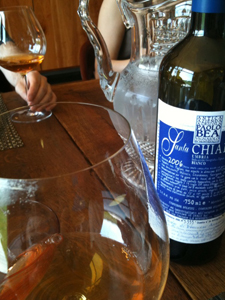 Orange wines are sweeping the nation! Well, something like that. These white wines emerge from their fermentation on the grape skins with a rich, sometimes orange, hue. Since orange is the color of the season, it’s particularly apt to discuss, if not try, orange wines now. And that’s what Dave Erickson, a site reader in North Carolina who blogs at the Wine Mule, has been doing and he sent in this question about them:
Orange wines are sweeping the nation! Well, something like that. These white wines emerge from their fermentation on the grape skins with a rich, sometimes orange, hue. Since orange is the color of the season, it’s particularly apt to discuss, if not try, orange wines now. And that’s what Dave Erickson, a site reader in North Carolina who blogs at the Wine Mule, has been doing and he sent in this question about them:
We had a tasting of orange wines the other night, and the question came up: How do sommeliers deal with these wines, when they all seem to need anywhere from 4 to 24 hours to become presentable? Do they tell diners to call in advance? Do they use aerators?
I forwarded it to Levi Dalton, a trend-setting sommelier and has been shining an orange light in the wine world for at least a couple of years now. What follows is his detailed reply:
Back in 2009, when I held the first of a series of Orange wine dinners at Convivio restaurant in Manhattan, Read more…
Refreshing Brunello: Il Paradiso
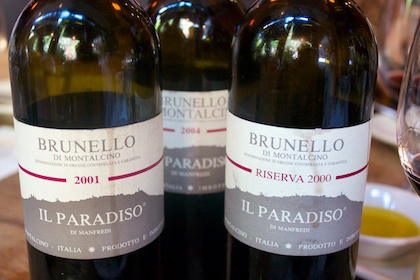
I attended a private dinner recently where a Brunello was the main wine. It was big and extracted and I found it fatiguing. I can’t even remember the producer’s name. Of course, the palate fatigue wasn’t helped that the other wines on the table were a primitivo and an Amarone. It was the sort of lineup that made me want to step outside under the pretense of feeding the meter and wander off to find a beer.
A few weeks later, I had another side of Brunello, aptly named Il Paradiso. In 1958, Manfredi Martini bought some land in Montalcino. He worked at Biondi-Santi and converted his seven-acre property from olive trees to a vineyard of sangiovese grosso. When the Brunello de Montalcino DOC became formalized in 1968, there were only about a dozen producers (there are now over 200). Today, the vineyards ekes out a mere 9,000 bottles a year, split between a Rosso and the Brunello. Manfredi’s daughter and son-in-law, Sorella and Florio, continue making old-school Brunello from the organically grown vineyards and raised in barrels as large as 2,500 liters.
When sangiovese is on, it is gorgeous. I tasted the wines at their American launch (Grand Cru Selections is importing them; search for these wines). The 2004 was the richest of the wines I tasted–this is still Brunello, not Chianti, after all–but it was plummy rather than the tiring jam. The thing that got me about this wine was the concentration without being overdone. The 2001 has an alluring aroma of spice, cedar, faint volatility and oxidation with a lovely, appetizing bitterness on the ten-year old tannins. Layered and complex, it is drinking well now. The 2000 Riserva saw more time in large oak barrels but has an old-school charm, redolent of earth, leather, and faint spice. These are distinctive Brunellos–definitely not ones to walk out on.
A transitional red: SP68
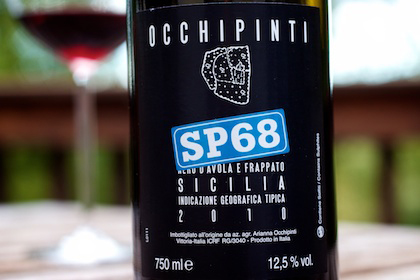
As the fall weather starts to arrive, here’s a great wine for the seasonal transition: SP68 red from Arianna Occhipinti. Hailing from an organic vineyard in Sicily, the wine blends the summer joy of Frappato with the more structure of Nero d’Avola. Serve it slightly chilled for maximum enjoyment. The 2010 is a bit more tannic than the 2009 but both are easy, fun drinking. (Search for this wine at retail)
 In 2004, Arianna Occhipinti made her first Agricola Occhipinti wine at the ripe old age of 21. Her uncle, Giusto, makes the wines at COS, a traditional winery in Sicily. She makes her wines naturally; find out more about her in this Q&A. I poured this wine at a tasting in NYC recently and the group really liked it. I also showed them the picture of Arianna (right) and one person, commenting on her youthful looks, said it looked as if she’d never been up against a co-op board.
In 2004, Arianna Occhipinti made her first Agricola Occhipinti wine at the ripe old age of 21. Her uncle, Giusto, makes the wines at COS, a traditional winery in Sicily. She makes her wines naturally; find out more about her in this Q&A. I poured this wine at a tasting in NYC recently and the group really liked it. I also showed them the picture of Arianna (right) and one person, commenting on her youthful looks, said it looked as if she’d never been up against a co-op board.
